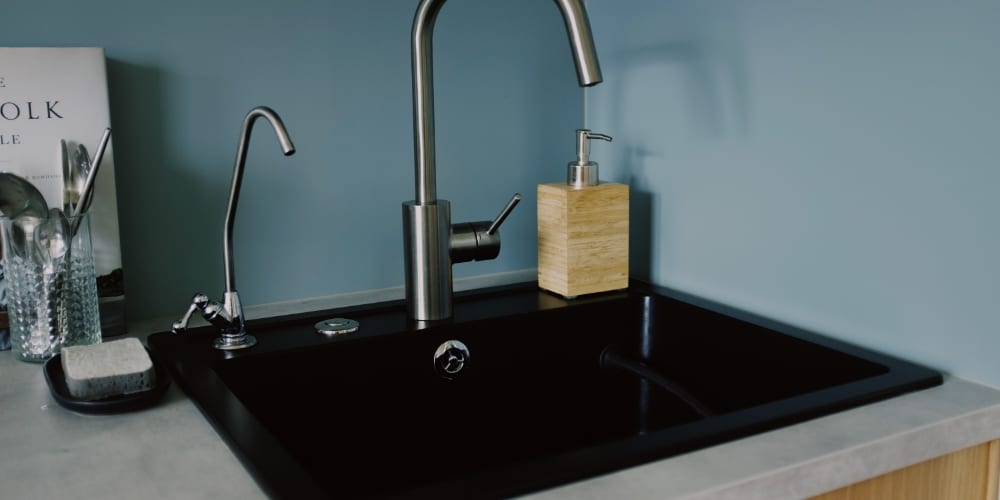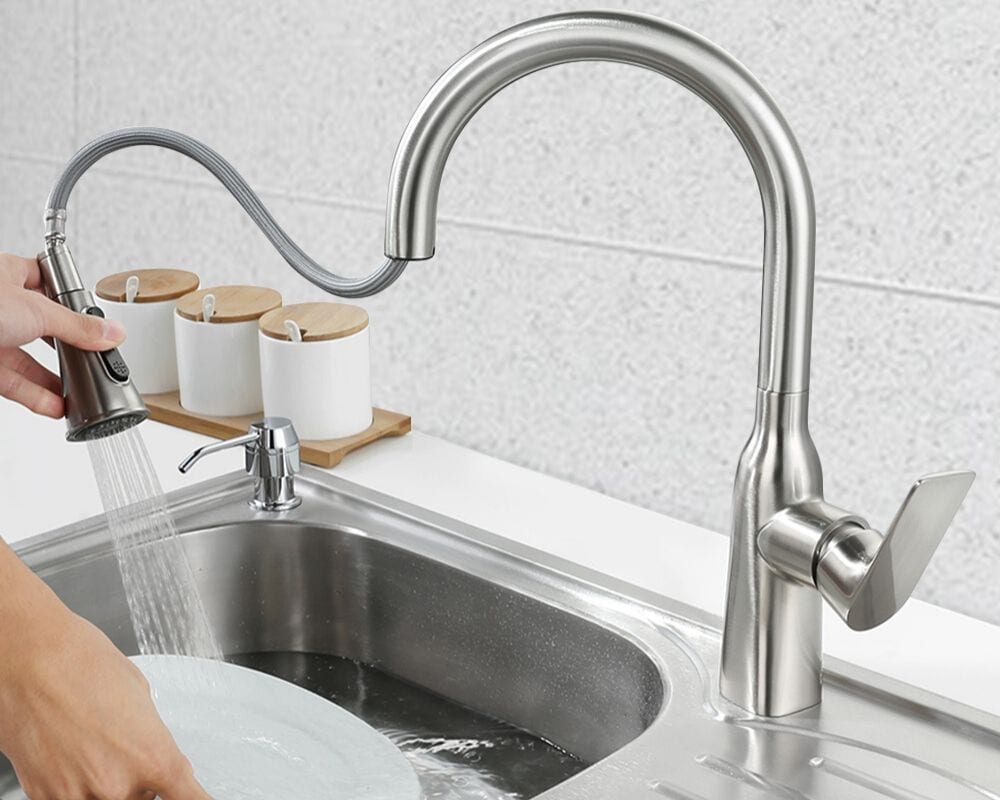It can be very frustrating for the water pressure in the kitchen sink faucet to become smaller. So, what causes the water pressure of the kitchen sink faucet to be low? Low water pressure in kitchen sinks is usually caused by clogged aerators or filter cartridges. Interruption of water pipes, routine maintenance and leakage of toilets are also the reasons for this situation. Sometimes, a closed shut-off valve or pressure relief valve (PRV) may also be the cause. In fact, there are not many times when you encounter this kind of situation in your life. If the faucet is not under pressure, the water flow is relatively small. You can see if the position of the hot water and cold water valve core is reversed or something is installed when the hot and cold faucet is installed. Block, you need to clean the faucet pipe spool and filter regularly, many times you think it is clean and there will be no impurities, but open the water pipe and the spool only to know that you think the cleanness has blocked the water pipe, and the natural pressure will also be Become smaller or even disappear. Disassemble and clean up with a toothbrush or cotton swab.
Of course, you should also check whether the cold water valve is closed. Sometimes, the water valve may be temporarily closed during the leak repair. There is also to check whether the mixing valve is malfunctioning. Once damaged, it may affect the water pressure of the faucet. If it is in the kitchen and shower or other places with hoses, pay attention to keep the hoses smooth, and pay attention to avoid obvious creases, otherwise it will affect the water pressure.
Don’t worry if there is no water pressure in the faucet. It is recommended to first check whether the water stop phenomenon occurs in the community, and then determine whether the cold water valve is turned off. If the residents living in high-rise or top-floor communities, the peak water consumption may be I feel that the amount of water is small or there is no water pressure in the faucet. It may be that the water pressure caused by the height problem does not come up. If other residents in the community have similar situations, it is likely to be the problem of water pressure.
Faucet aerator
An aerator is a device that controls flow and is usually found near the tip of the faucet. Usually, minerals, particles or debris may clog the inflator. As a result, your kitchen sink may eventually lose water pressure. In most cases, cleaning the aerator should restore water pressure.
You can inflate by rotating your hand counterclockwise. If it seems difficult to open by hand, you can use toothed tape pliers. After taking it out, you can immerse the aerator in vinegar and brush off the sediment. Generally, it should be sufficient to soak the ventilator overnight. In short, if the particles are too stubborn to fall off, they can be replaced at any time.
Faucet cartridge
A clogged tap cartridge may also cause the water pressure in the sink to be low. The cartridge controls the flow of water in your faucet. In other words, when you open the handle, the cartridge will open the valve, allowing water to flow through. As you will see, cleaning the cartridge is much more complicated than cleaning the aerator.
Before starting to remove the faucet, please close the shut-off valve and let all the water run out. This is to ensure that there is no residual water in the pipeline. Then, close the plug of the sink to prevent debris from escaping into the drainage system. Now, use a flat-blade screwdriver to pry off the handle cover. After removing the handle, you can use a pair of anti-skid pliers to remove the fixing nut. Sticking the tape to the teeth of the pliers helps increase grip. In addition, this will prevent the faucet from being scratched. Then, use a pair of ordinary pliers to pull out the retaining clip. Finally, you will be able to pull the cartridge out of the opening.
You can clean the cartridge by soaking the cartridge in vinegar overnight. Use a stiff brush to scrape off the sediment. However, if you feel that the sediment is too stubborn to fall off, you should consider replacing it.
Waterline interruption
Your water supply line may be interrupted from time to time. However, detecting them may not be easy. If not only your kitchen sink loses water pressure, it is likely to interrupt the water supply line.
You can confirm if there is an interruption in the water supply line by reading the meter reading. That is, turn off all faucets and water outlets, and then read the meter readings. After about four hours, read the meter again. A change in reading will indicate a leak caused by a water supply line interruption somewhere.
If the water line may be interrupted, you should call a professional plumber for inspection.
Leaky toilet
Leakage in the toilet will reduce the water pressure in the kitchen sink and other areas. Some of the causes of the leak are the rupture of the water supply line or toilet tank. In addition, the baffle, feed valve or float may get stuck and cause a leak. In addition, it may even be the wrong connection or warped baffle.
Although you can try to fix it yourself, I suggest you call a certified plumber. They have extensive experience in dealing with such issues.
Angle valve
The angle valve usually drains water under the kitchen sink. Because the valve is not always in working condition, these deposits tend to accumulate over the years. Therefore, the washer is weakened. Sometimes, there is a tendency to leak near the stem of the globe valve. In any case, it is always a good idea to first check whether the valve is fully open. Most importantly, the angle valve may be the only cause of low water pressure in the kitchen sink. If your kitchen sink has two angle valves (hot and cold), please check if you need to replace two or two. In most cases, it is easier to replace than trying to make a faulty angle valve work.
Before attempting to replace, please close the main water pipe to prevent water from disturbing your work. First, remove the water pipe connected to the angle valve and loosen the nut with a wrench. You can delete it by turning counterclockwise. Next, remove the compression nut that holds the angle valve in place. Removing the compression nut will cause the angle valve to come off.
Make sure to get the same globe valve for replacement. Tighten the compression nut to secure the new valve in place. However, do not overtighten it, otherwise it will damage the nuts or pipes. Finally, reconnect the water supply line and tighten its nuts.
Pressure reducing valve (PRV)
The PRV (also called pressure regulator) is usually located on the line into the home or office. It is shaped like a bell and is preset by the manufacturer. Make adjustments to see if it affects water pressure or if there are signs of damage.
If you think there is a problem with the PRV, you can replace it yourself or call a certified plumber to fix it. If you decide to do it yourself, make sure to close the main shut-off valve first.
Do not hesitate to send email to info@vigafaucet.com to get factory price
 VIGA Faucet Manufacturer
VIGA Faucet Manufacturer 

